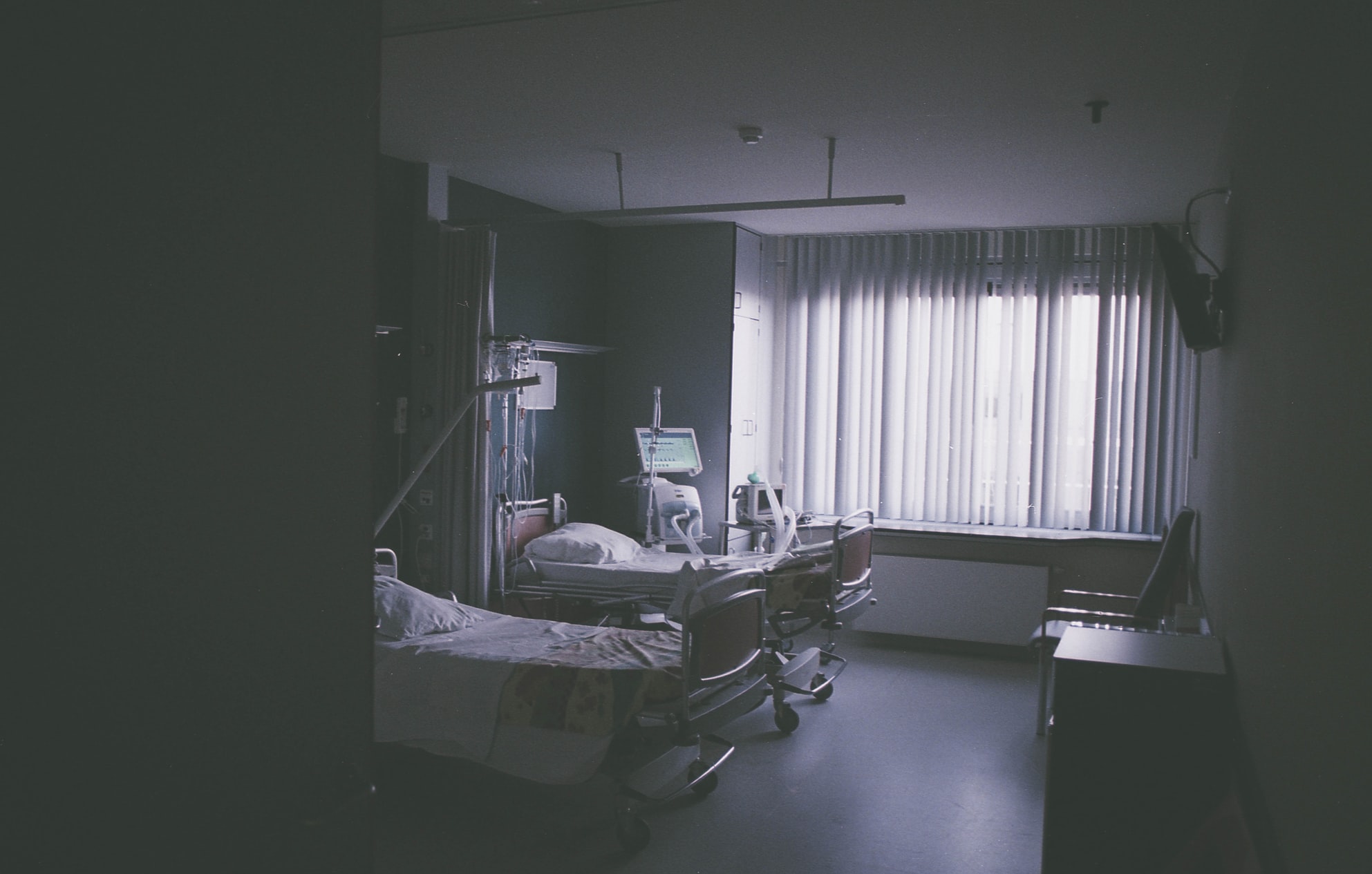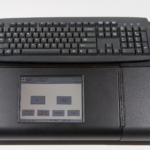How one woman’s battle with uterine cancer saved an untold number of women from a similar fate
 On May 23, 2017, Dr. Amy J. Reed, an anesthesiologist and mother of six children, passed away in her home at the age of 44. Her life was cut short by an aggressive form of uterine cancer, leiomyosarcoma. For her husband, the tragedy of her early death is entwined with regret and anger, as the two of them fought not only Stage IV leiomyosarcoma, but an intractable profession and the industry which profits from its practice.
On May 23, 2017, Dr. Amy J. Reed, an anesthesiologist and mother of six children, passed away in her home at the age of 44. Her life was cut short by an aggressive form of uterine cancer, leiomyosarcoma. For her husband, the tragedy of her early death is entwined with regret and anger, as the two of them fought not only Stage IV leiomyosarcoma, but an intractable profession and the industry which profits from its practice.
At the age of 40, Dr. Reed was diagnosed with uterine fibroids. Fibroids are masses of the smooth muscle cells lining the inside of the uterus. Although fibroids are generally considered benign, their presence can cause serious discomfort and pain in the pelvic area. To treat her condition, Dr. Reed underwent a hysterectomy. She chose to have the procedure performed at Brigham and Women’s Hospital in Boston—the hospital is affiliated with the Harvard Medical School, where both Dr. Reed and her husband, Dr. Hooman Noorchashm both held teaching positions.
After her surgery, the tissue was removed, and a biopsy was performed. The tissue contained leiomyosarcoma cells, an extremely aggressive form of uterine cancer. Although the biopsy revealed that the cancer cells had been confined to a very small area within a fibroid, the procedure through which the fibroids were removed seeded malignant cells throughout her abdomen. The dissemination of cancer cells caused her cancer to accelerate to Stage IV. The five-year survival rate for patients diagnosed with Stage IV leiomyosarcoma is only 14%.
At that point in time, hysterectomies were almost uniformly conducted laparoscopically—approximately 500,000 women per year. Laparoscopic procedures allow a surgeon to perform many types of surgical procedures without the need for a large incision. When performing a hysterectomy, the surgeon would remove the uterine tissue through a small incision, limiting the invasiveness of the procedure and minimizing scarring.
In order to remove the uterus, a device called a power morcellator was used to cut the tissue into fine pieces that could then be removed through the small laparoscopic incision. The morcellator uses a small, rapidly spinning blade, to slice tissue. Morcellation spreads small particles of affected tissue throughout the local area of its operation. While this poses no concerns where the morcellated tissue is not malignant, in situations, such as Dr. Reed’s, where a small number of malignant cells have been encased in fibroid tissue, the spinning blade splatters those cancerous cells throughout the lower abdominal body cavity.
Dr. Reed and Dr. Noorchashm were not told about the use of the power morcellator until after they received the biopsy results. As medical professionals, they recognized the disastrous consequences of morcellating malignant tissue and immediately undertook aggressive cancer treatment. At the same time, the shock and anger of what had happened drove the couple to rail against the medically accepted procedure.
They began their activism through a campaign to inform medical professionals and administrators of the dangers of morcellating fibroids. The scope of their efforts ranged from contacting the FDA, AMA, hospitals, medical practices, individual doctors—they even reached out to lawmakers in an effort to garner support for an institutional change. Dr. Noorchashm discovered other women that had experienced the same devastation, reached out and discussed their cancer diagnosis with them.
The fierceness of their protest was not received well. In fact, it turned former colleagues against one another. When Dr. Reed returned to Brigham and Women’s Hospital, the administration directed a security guard to first search their belonging and then follow her and her husband while Dr. Reed underwent a procedure. Fortunately, a call to their lawyer, and a judge’s injunction, stopped the unusual, and unnecessary, monitoring.
Dr. Noorchashm also suffered for his advocacy. His career was derailed due to his consistent criticism of Brigham and Women’s Hospital gynecology department. Prior to that, he had been on the track of advancement within the hospital, portending a promising career. However, the challenges became unbearable, and the couple moved away from Massachusetts to Philadelphia. Despite their personal struggles, however, their efforts were not in vain.
The FDA had not received any reports of the spread of cancer through morcellation prior to 2013. Dr. Reed’s efforts brought it to the agency’s attention. After researching the problem and developing data, the FDA determined that morcellation of cancerous tissue likely occurred in as many as 1 in 350 women undergoing the procedure. This immediately led to questions about why the problem was not detected earlier, which are still outstanding.
Soon after the FDA published these findings, the largest producer of power morcellators, Johnson & Johnson, pulled the product in a major recall. The FDA recommended the device not be used in most types of fibroid surgery, and that practitioners should disclose the dangers and risks associated with its use to any patient undergoing a morcellation procedure. The use of the product dropped significantly with Johnson & Johnson’s recall and the FDA warnings, but other manufacturers continue to produce morcellators, as some medical professionals still considered it the most effective means for performing hysterectomies.
Drs. Reed and Noorchashm successfully lobbied Congress to engage the nonpartisan Government Accountability Office to investigate the matter. In its final report, the GAO faulted physicians for underreporting bad morcellation outcomes, which in turn implicated the FDA’s self-reporting system of monitoring the procedure. In response, the FDA overhauled its procedures for gathering data.
Information also came to light which suggested Johnson & Johnson had been informed of the possibly catastrophic effects of fibroid morcellation before the recall. The implications were such that the FBI initiated a probe of the situation, although it never grew into a full-blown investigation. The probe revolved around a communication from a pathologist, Dr. Robert Lamparter, to Johnson & Johnson years before the voluntary recall in 2014 that outlined the dangers inherent in morcellation. Further inquiry revealed that an FDA officer, Dr. Daniel Schultz, expressed concern over the morcellator in a January 1995 phone call. The same day, he wrote a summary for the approval record that the device “must be used with an appropriate tissue extraction bag for malignant and other tissues which are potentially harmful if disseminated within a body cavity.”
In sum, the actions arising out of Dr. Reed’s tragic death lead to the recall of a dangerous medical device, an institutional rethinking of the manner in which medical devices are approved for use, and a change in the manner in which those devices are subsequently monitored for adverse effects. The medical community looks at morcellation of uterine fibroids very differently because of Dr. Reed’s and Dr. Noorchashm’s efforts. Nevertheless, women continue to come forward with new claims of advanced uterine cancer resulting from the device’s use. Johnson & Johnson has settled numerous lawsuits, some in the seven-figure range, resulting from their power morcellator device.
Although medical devices will always balance risk versus utility, as all medical procedures, thorough review of the consequences of the products use and routine monitoring to search for unexpected consequences should unquestionably be the guiding light for the FDA and medical practitioners.
Benjamin W. Bryant, J.D.
Neumann Law Group
This blog relied upon the following source material:
- “Laparoscopic Power Morcellators” FDA Website informational article, current as of August 22, 2018.
- “Immediately in Effect Guidance Document: Product Labeling for Laparoscopic Power Morcellators” FDA Guidance Document, November 2014.
- “Email from Dr. Hooman Noorchashm to Dr. Ted Anderson, current president of the American College of Obstetrics and Gynecology, dated January 2, 2020, source from Medium.com
- “Amy Reed, Doctor Who Fought a Risky Medical Procedure, Dies at 44” New York Times, May 24, 2017, by Denise Grady.
- “Weak Reporting System Let Risky Surgical Device Stay in Use” New York Times, February 8, 2017, by Denise Grady.
- “F.D.A. Issues Caution on Use of Uterine Surgery Device That Can Spread Cancer” New York Times, November 24, 2014, by Denise Grady.




